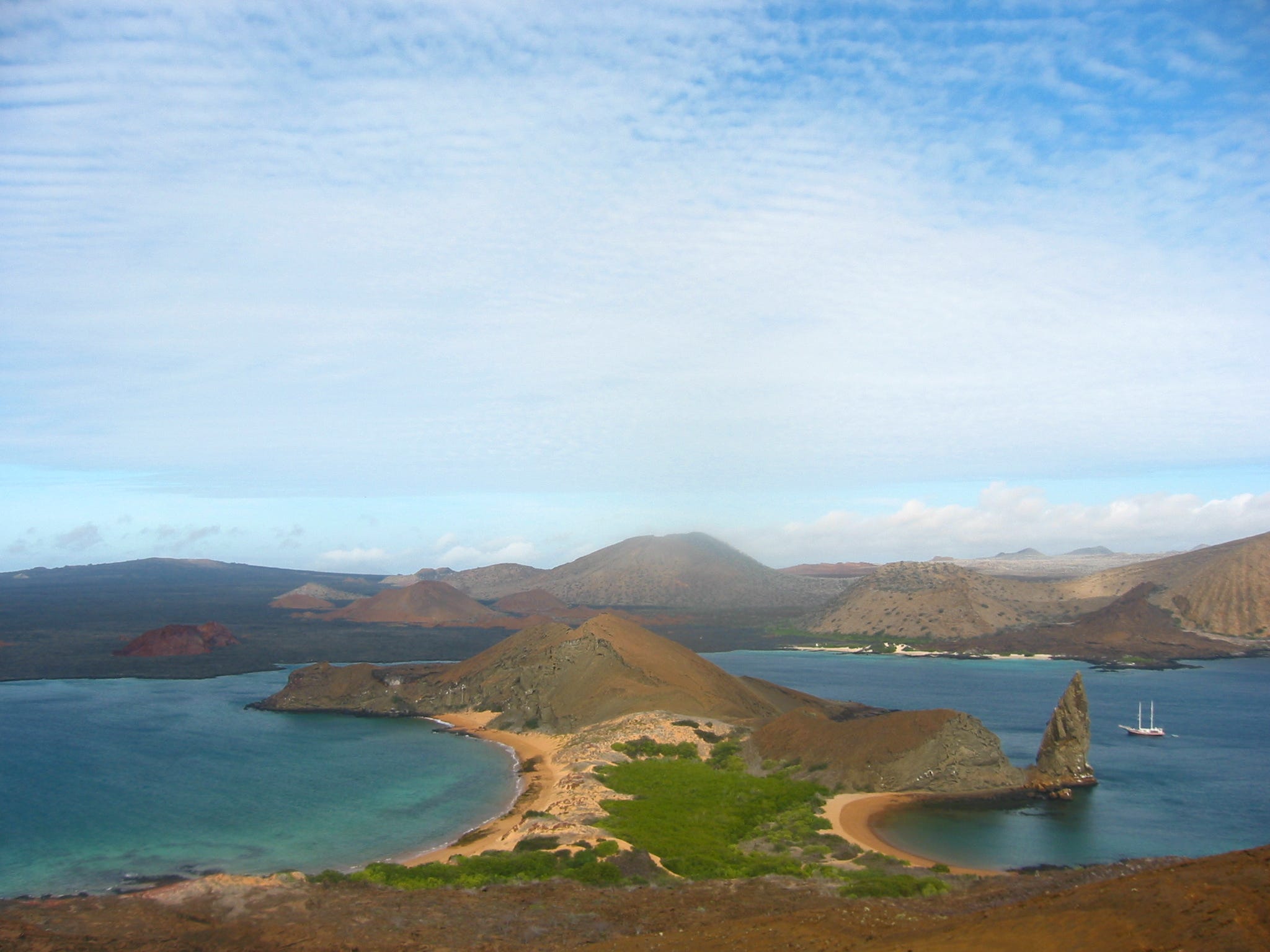
Did you know that I have a time machine? You all do too. In some ways, that’s what we’re doing when we access past memories. Today, I’m going to hop in my time machine and travel back more than a dozen years to a point in time that had a profound impact on me, though I wouldn’t fully realize its significance until much later.
As I mentioned before, I grew up loving places like zoos and aquariums. I still do. However, no matter how much effort is put into making the habitats suitable for the animals on display, they are still somewhat sterile environments. Thus, growing up, I didn’t have a lot of experience with actual wildlife beyond what you might find in a typical New England town. This changed as I transitioned from high school and into college, as I began to have opportunities to observe and work more in the field.
The summer after I graduated from high school, my family took a trip to Ecuador, including the Galápagos Islands. Being so long ago, I don’t remember why exactly I picked it as the destination. I suspect it was because I knew that there would be really interesting wildlife to see, like nothing I had experienced before. The islands were also famous for their impact on Charles Darwin and the development of his theory of evolution via natural selection. People can remember the example of the finches from school, but they are only the beginning.
I was expecting the trip to be a fun experience and something very memorable, but I had no idea just how interesting the islands would be. Firstly, the Galápagos are a wonderful place for a reptile lover like myself. The giant Galápagos tortoises, Chelonoidis nigra, are an incredible sight. Much like the beaks on the various species of finches, the shape and size of the shell varies between the tortoise populations on different islands based on the conditions found on each island.
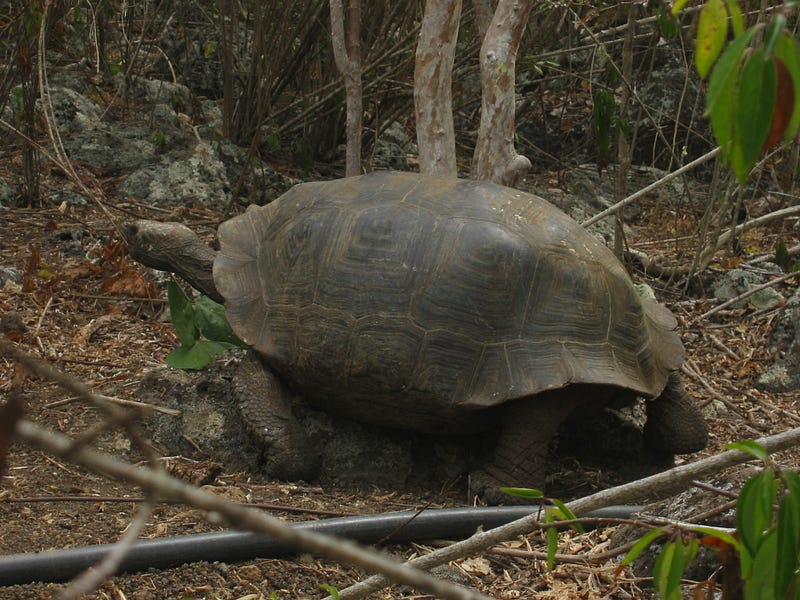
Then there are the marine iguanas, Amblyrhynchus cristatus, a species of lizard found nowhere else in the world. They have developed dark skin coloration to better absorb heat from the sun and the volcanic rock they bask on. Their tails are flattened for swimming and they have salt glands for excreting the excess salt from sea water, as they do all of their foraging in the ocean. I also came across a wild sea turtle while snorkeling.
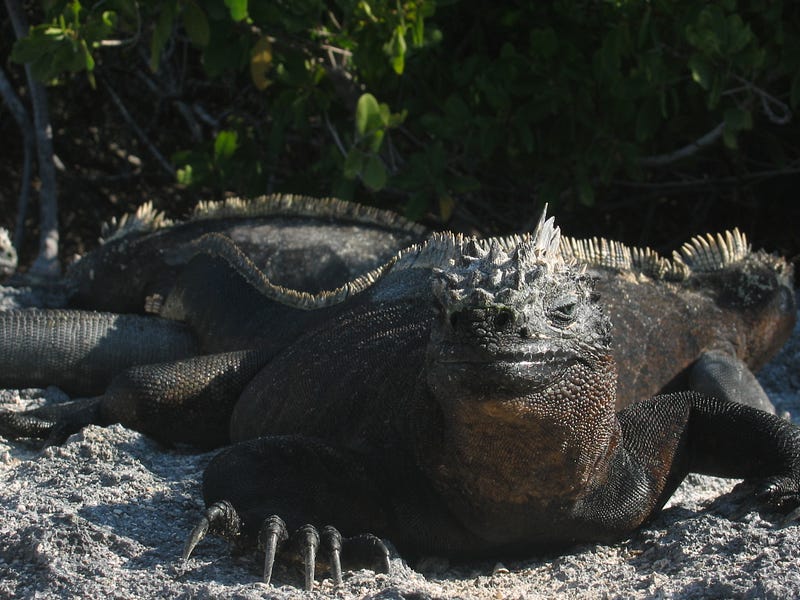
Even these pale in comparison to the bird life on the islands. It is a birder’s paradise, and not just for someone who wants to see lots of new birds. These animals were not sterile or captive. They were wild, and behaved accordingly. We could get so close binoculars were often not even necessary. Looking back, I believe that it was these birds that drove my interest in animal behavior. We got to see a variety of fascinating mating displays, including blue-footed boobies, Sula nebouxii…
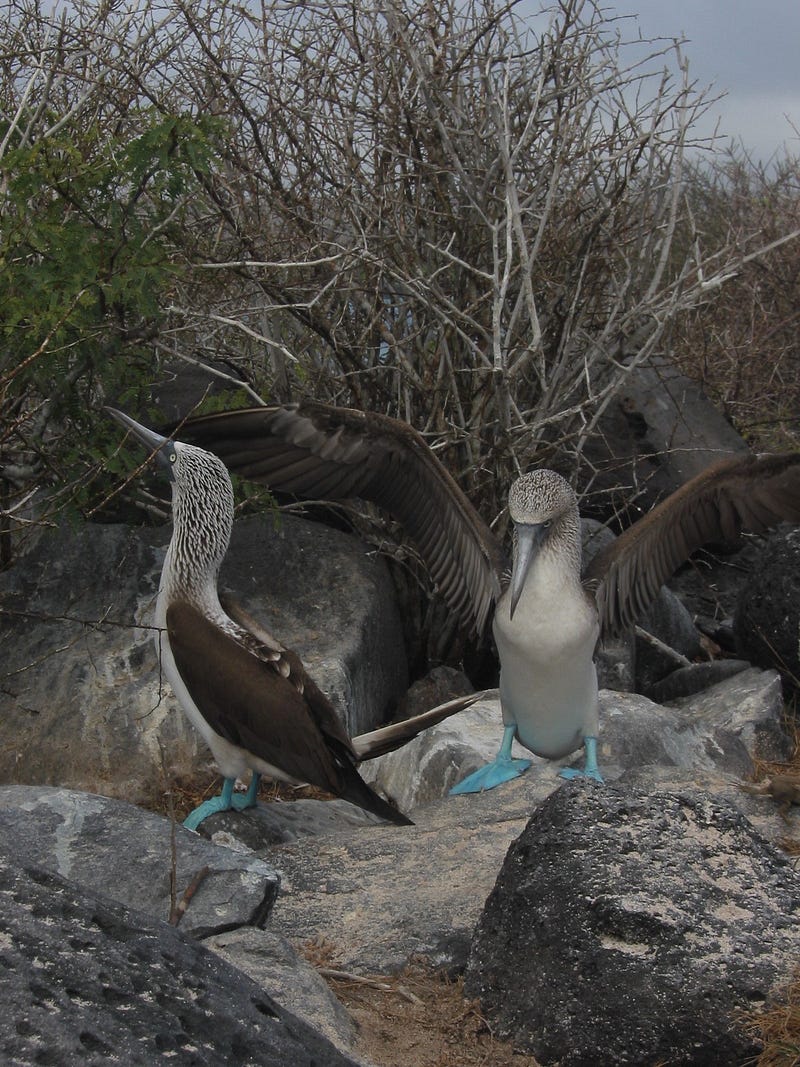
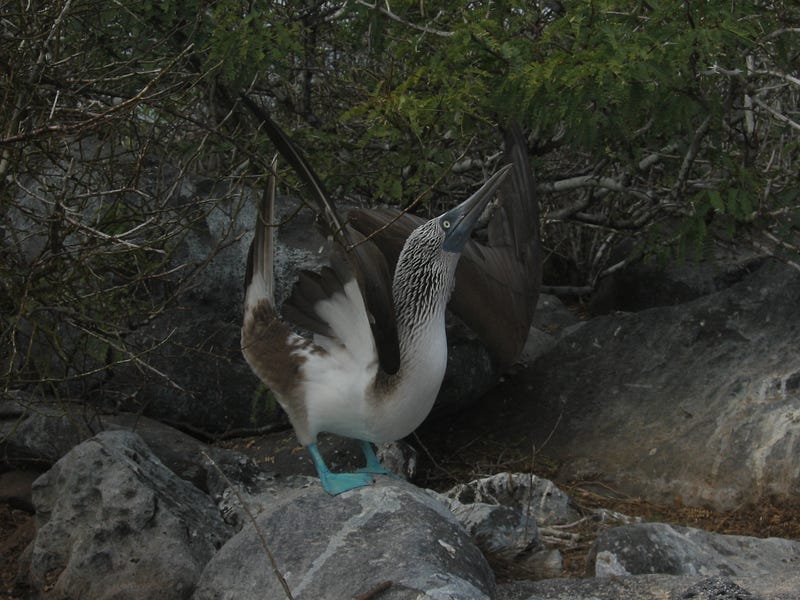
and magnificent frigatebirds, Fregata magnificens.
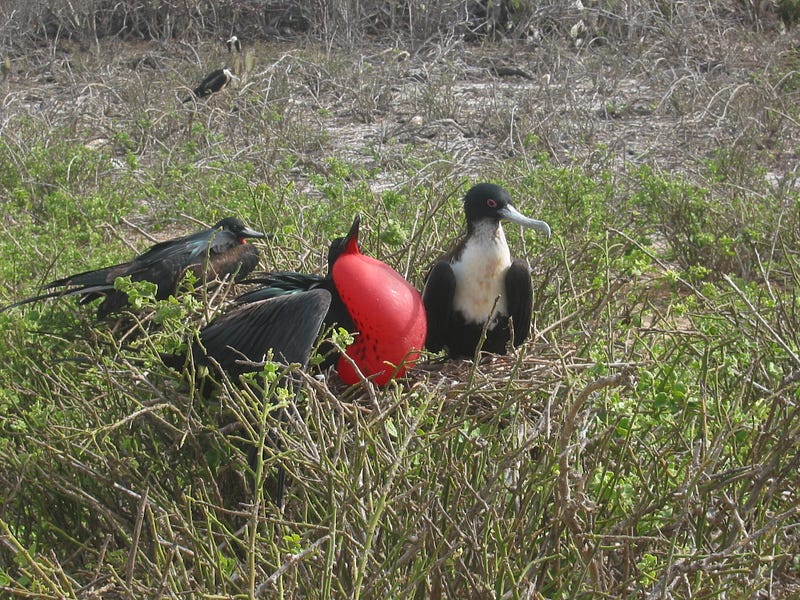
These displays were fascinating, and I never got tired of them for the whole trip. However, the species that sticks in my mind the most was the waved albatross, Phoebastria irrorata. A picture is not enough to describe what we saw. Both motion and audio are part of it. My brother recorded a short video of their mating dance, but neither of us could find it. However, I was able to find a good video on YouTube. Even years later, watching it still gives me chills.
These are incredibly large birds (30–35 inches long with a 7–8 foot wingspan) and they look and act so ungainly on land, but are very graceful in flight. Then there was the dance. It was both completely bizarre and absolutely wonderful. I was in awe. I was hooked.
Looking back on that trip now, over a dozen years later, I have slowly begun to recognize just how influential it was in my development as a scientist. I knew already at this point that I intended to study biology, and that I preferred the macro world to the micro, something that put me in the definite minority of my fellow biology majors in college. However, I really didn’t know much beyond that. I think the Galápagos had a subtle influence on my interests that I’ve only begun to realize within the last few years.
The tendency to be thrilled by interesting behaviors and situations as opposed to just new species is probably the most obvious effect, but certainly not the only one. I believe that my experiences on the islands also drove me to be curious about the relationships between animals and their environment and how those relationships affect animal behavior. Similar to Darwin’s own trip there, I didn’t have an immediate epiphany (he only realized the significance of some of his finds when he got back and began examining his specimens). Instead, I have only realized just how important this trip was long after the fact.
Well, it’s time to hop back in the old time machine and fast forward back to the present for next week, where I’ll be taking a look at something we have in abundance here in Florida: sunshine.